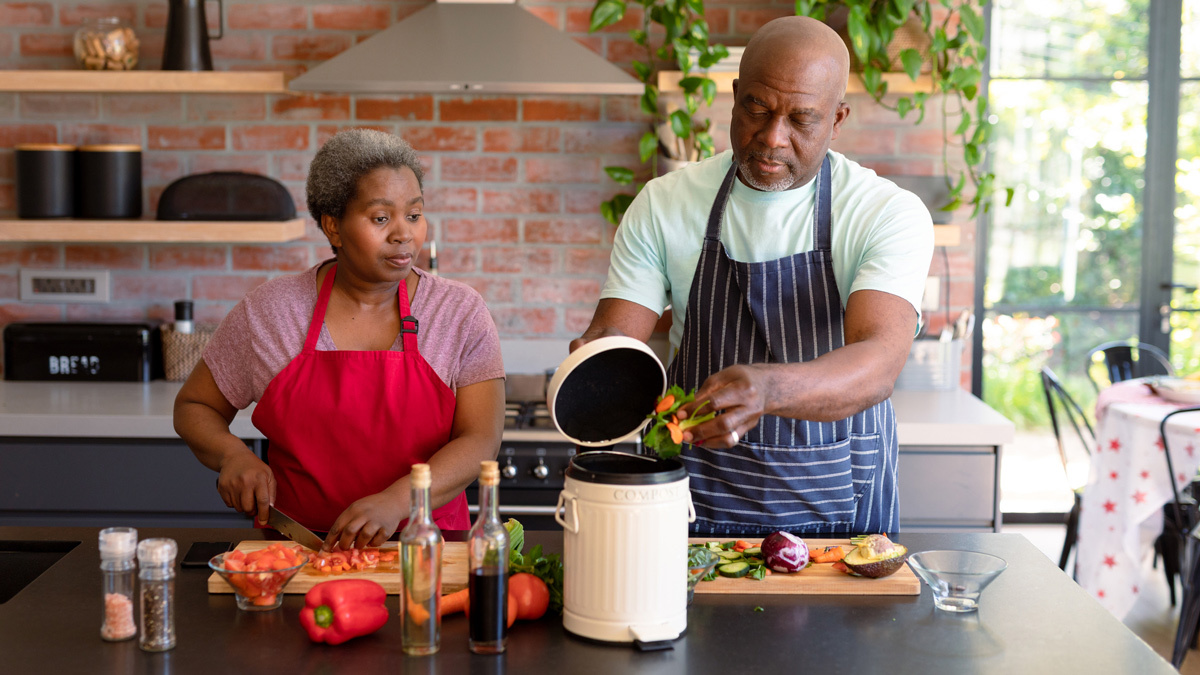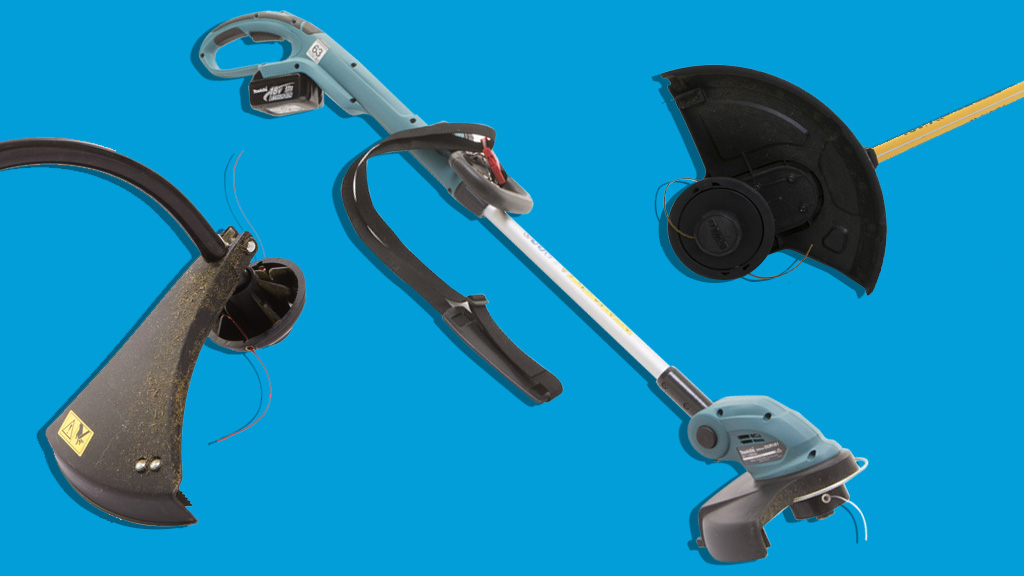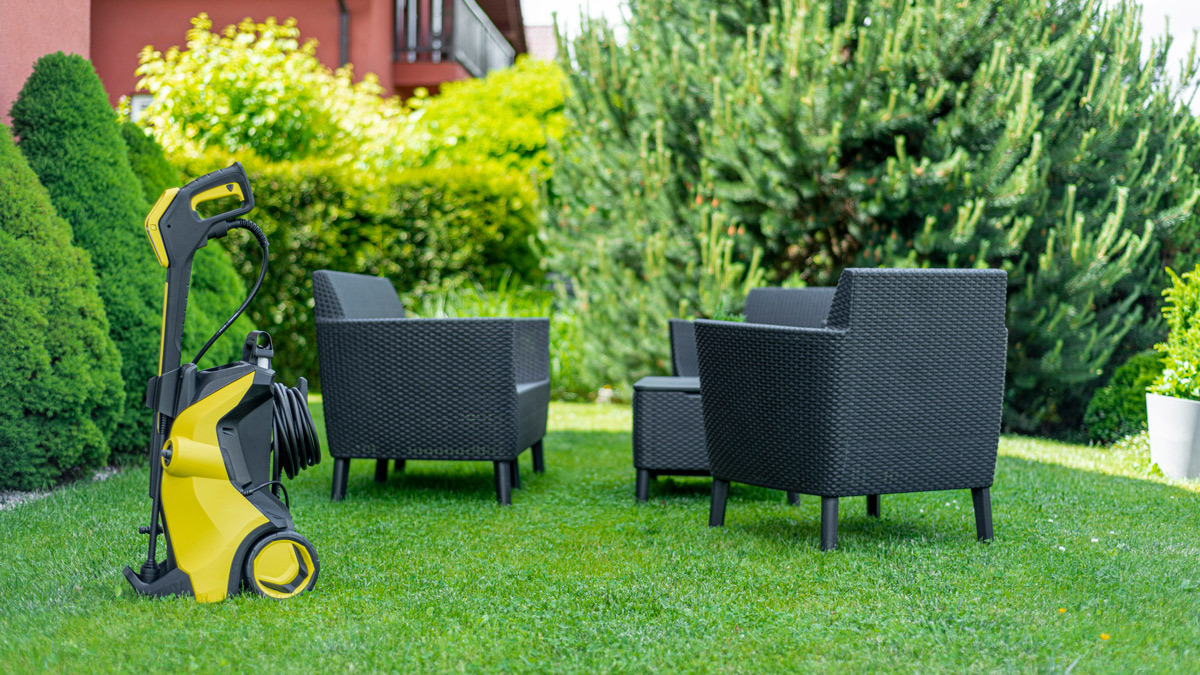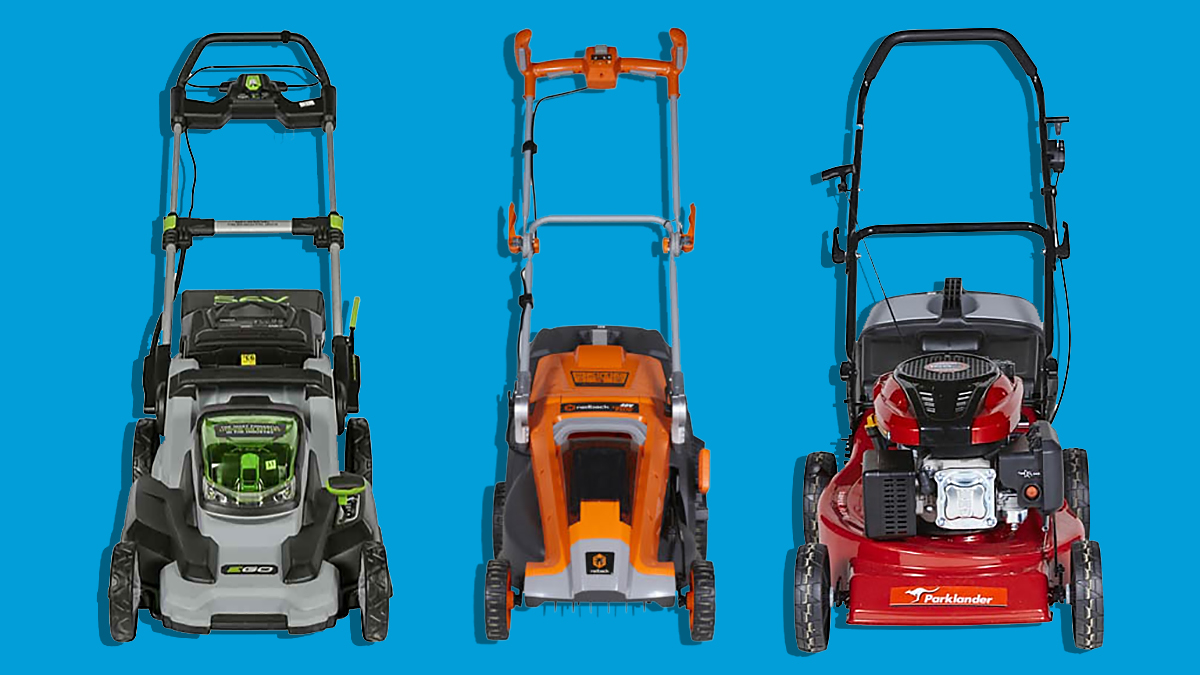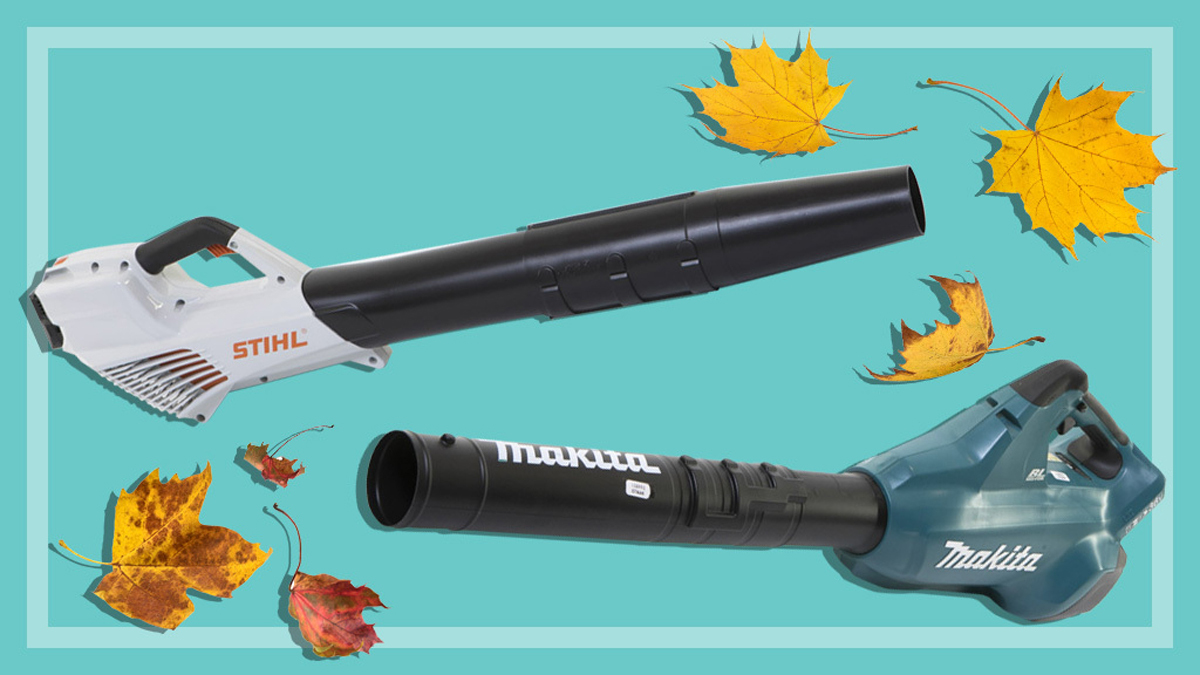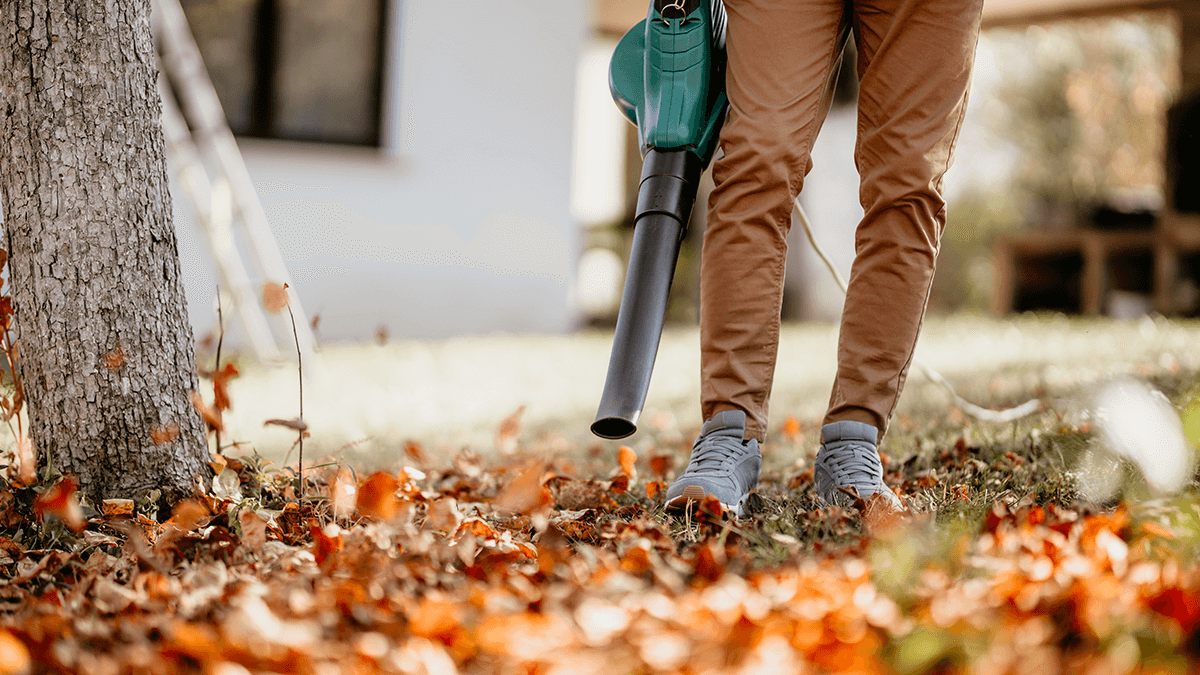Get our independent lab tests, expert reviews and honest advice.
How to start a compost system
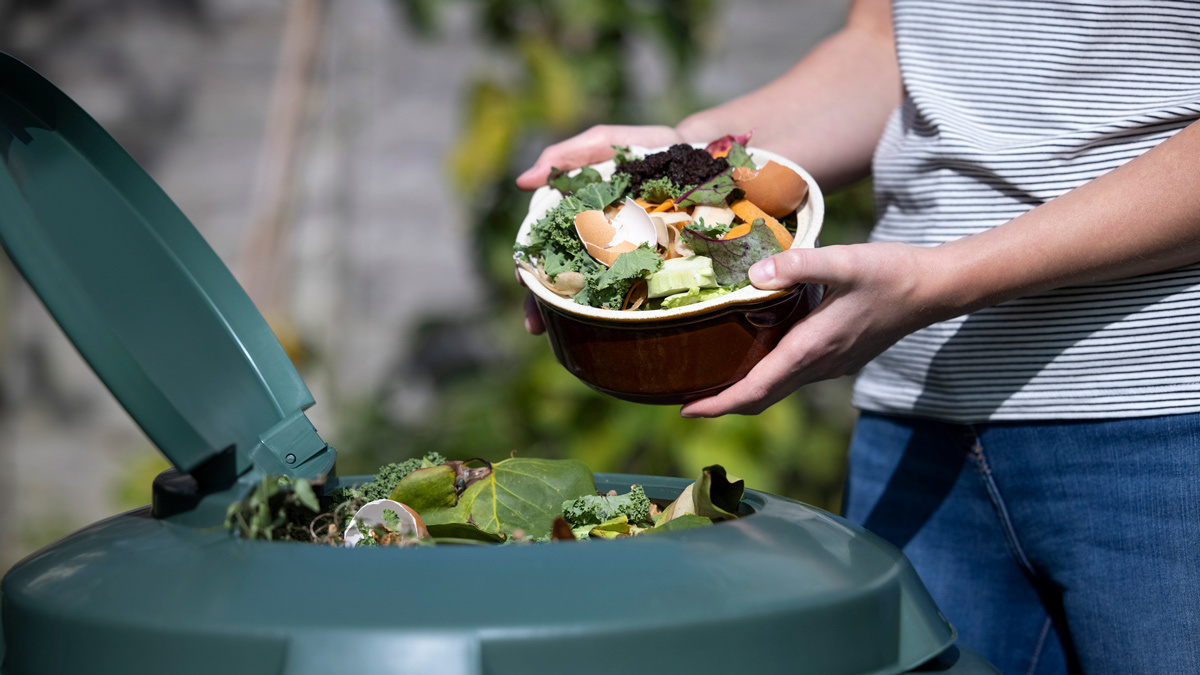
Overwhelmed by the mountain of composting dos and don’ts? Our experts have tried and tested various composting products to guide you to the right options for store-bought, off-the-shelf ways to reduce food waste such as tumblers, bokashi bins, above and below ground worm farms and solar waste digesters.
On this page:
- What is composting?
- What to do before choosing a compost system
- What can you compost?
- A note about DIY classic composting
What is composting?
Composting is the decomposing of organic waste (meaning it was once alive) into a nutrient-dense mixture used to condition soil. It helps many plants thrive without the need to buy off-the-shelf compost, plant food, or fertilisers. With just air, water and your food scraps, microorganisms will convert your waste into a rich, earthy, dark compost.
Composting can be done above ground, also referred to as hot composting, or underground (cold composting).
For good compost, you need a balance of green waste and brown waste – generally a ratio of 1:1 by weight, which is about 1:7 green to brown by volume.
- Green or nitrogen waste: This is anything fresh, such as food, fruit and veggie scraps, spent coffee grounds and tea leaves, wilted flowers and grass clippings.
- Brown or carbon waste: This is anything that once was alive or part of a living thing, for example, shredded paper, cardboard, toilet paper rolls, tissues, paper towel, hair, fur, nail clippings, dried leaves, cork, natural fibre fabrics, egg cartons, and hay or straw from animal bedding.
You’ll be amazed how much of your waste can actually be home composted and prevented from going to landfill. Imagine going from an overflowing weekly garbage bin to one that’s barely a third full – if at all on some weeks!
Why should you compost?
Food waste that goes to landfill is effectively deprived of oxygen, so it undergoes an anaerobic (without oxygen) decomposition process which produces methane gas. Methane is a very potent greenhouse gas – much more so than carbon dioxide, and is a significant contributor to global greenhouse gas emissions.
Composting, on the other hand, is an aerobic process which doesn’t produce methane. So, by the simple act of composting at home we can collectively make a difference to our environment for the better, and improve the quality of our local soil and gardens. While any organic matter will decompose eventually, using a dedicated compost or food digesting system, speeds up the process.
What to do before choosing a compost system
Survey your waste
Collect your food scraps over the course of a few weeks, and take note of the below.
- The volume and weight per week.
- The type of waste you produce: how much is cooked food? Does it contain meat, dairy and oils? What about the volume of citrus, onions and spices? Knowing this upfront will guide you as to what system may suit you best.
- The amount of brown waste that’s available, since in most cases you’ll need to balance the amounts of green and brown waste you’re likely to compost.
Choose a location
Want an outdoor compost? Survey your garden well, and find out how deep you can dig without hitting rock. Do you have free draining soil, or is it clay-like? Are there established trees and plants with quite a few root systems running through the ground? If you answered yes to any of the above, finding a suitable place to install an underground system or bury bokashi waste may be difficult.
No matter how well-built or sealed an above ground compost system is, it’s still a yummy food source for little critters, and pests will always find a way into it – particularly during the warmer months.
Locate an outdoor compost far enough away from your home to minimise the waft of potential smells, pests and rodents. Be mindful of your neighbours too – positioning your compost system too close to the boundary may not be good for relationships. But that said, one located too far away might become cumbersome to actually use, so find the middle ground that works for you.
Locate an outdoor compost far enough away from your home to minimise the waft of potential smells, pests and rodents
The key to minimising pests and vermin is to keep a healthy and earthy-smelling compost system, i.e. no putrid smells. Keep the surrounding area as clean as possible from food waste drips and scraps, and wipe down the exterior of the product each time you use it. This will help minimise potential pests locating the food source.
No backyard? No problem. You can still reduce your food waste going to landfill in the following ways: use a kitchen compost caddy or bokashi bin to collect your waste, and donate it to a relative or friend, your local community garden, or try ShareWaste to find a local neighbour who will happily take your food scraps and compost them for you.
Quick fact: Did you know that commercial waste services commercially compost this collected organic waste and sell it back to us?
Some councils have an organic food waste collection service that’s a good alternative to food waste going to landfill. Many councils also offer home compost options through Compost Revolution, often at reduced prices. You can access their online tutorials and support systems to help you on your composting journey.
What can you compost?
Each type of composting system has slightly different foods, items, and recommended amounts that can be composted. Use the following guide to help you choose the right one – and follow the manufacturer’s instructions for best results.
Can you compost cat and dog poo?
The short answer is yes, this can be composted. But it’s best to buy a dedicated pet compost specifically designed for the purpose. Cat and dog poo have parasites and pathogens that a normal compost system may not kill. A pet poo compost system that uses specific enzymes and microorganisms can safely compost your feline or canine pets’ waste, although it’s advisable to locate this away from your edible plants. But in most cases, you can place animal excrement from other pets, such as rabbits, guinea pigs and chickens, into any compost system (it’s classed as green waste).
Can you compost weeds?
Avoid placing weed seeds and infected plants into your compost, as this may propagate the weeds and/or spread the plant problem. Most compost systems will not maintain the necessary heat for the required time to kill off weed seeds and any pathogens. Compost can be applied to the soil surface or preferably mixed through the top soil wherever possible.
A note about DIY classic composting
Classic or traditional composting has been around for centuries. The DIY low (or no-cost) composting system is probably the most familiar, cost effective and sustainable option. It ranges from the open trench or hole in the backyard to the more elaborate, homemade, open-bottom container. But you’ll need to be somewhat handy and have the space and inclination to “work” this type of system. Vigilance about minimising access to pests and vermin is also a must.
Be very particular about what goes into the compost, or rather what doesn’t (such as cooked foods, meat, dairy or oils) as pests and vermin will surely find their way to them since most of these systems aren’t fully sealed. There are plenty of tutorials on how to get one of these going, so the focus in this guide is on store-bought options.
In this guide, we looked for the most popular and widely available compost system within most composting categories:
- bokashi bins
- tumblers (because they’re more popular and easier to use than other above ground composting options)
- underground compost with worms
- above ground worm farms
- solar waste digester.
While we’ve spent many hours assessing and researching each type in our home backyard, some are yet to go through the full composting process, so we’ll update you as the information becomes available.
Types of composting systems
Bokashi bins + enzyme mix
Compost tumbler
Above ground worm farm
Compost heap – a compost heap consists of organic material, a balance of green (nitrogen) and brown (carbon) waste, like fresh food scraps, garden and lawn clippings, cardboard, paper and dried leaves.
Compost bin – base layer of sticks, twigs and branches up to 20mm diameter; brown layer of leaf litter and/or shredded paper; green layer of grass clippings; brown layer of hay, straw, used pet bedding (herbivores only); green layer of kitchen scraps; brown layer of fallen leaves. Alternate green and brown layers, keeping it well turned and aerated for best results.
Solar waste digester
Underground compost with worms
Open bottom composting bins
Best suited to: A family with a good-sized backyard.
What you need: A suitable space away from the house.
Location: Outdoors – they’re generally not pretty-looking so you may want to hide them from view. Suitable for either a full sun or shady spot (a sunny spot will help compost items faster).
Good for: Most green and brown waste.
Not good for: Excessive meats, dairy, fats and oils, and too much citrus.
Cost: $60–350
Effort level: More maintenance than other systems. Layering of green and brown waste is recommended. Regular aeration is needed – with a garden fork or specific tool, which can be laborious. Removing compost can be tricky if you only have the one bin, as the top layer needs to be pushed aside to dig out the compost from the bottom and the top layers redistributed. Look for a unit that has hatches along the base for easier compost removal.
Pests/vermin: Too much of the wrong food, for example meat or dairy, will definitely attract vermin and pests. If it’s not a well-designed unit, extra effort is needed to wrap the edges and base with chicken wire or similar to prevent digging animals from getting to the composting food waste.
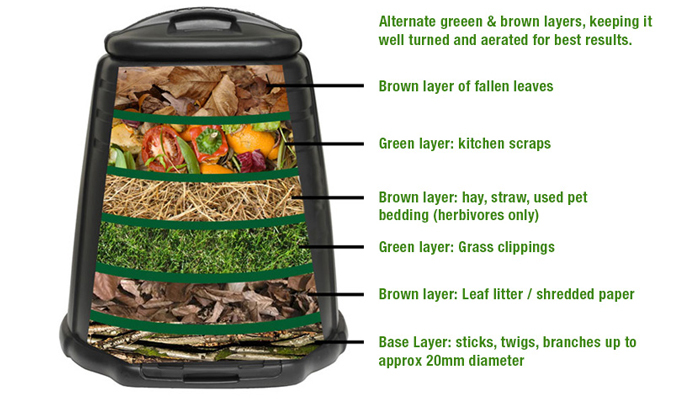
The bokashi bin
This is not technically a composter but rather uses added microorganisms to anaerobically (without oxygen) ferment food scraps in an enclosed bucket. But due to the type of microorganisms used and the acidity of the waste, it’s claimed not to produce any greenhouse gases – not even methane. This mixture is then transferred into the ground, or another compost system to fully decompose.
Best suited to: Anyone who wants to make a significant contribution to reducing food going to landfill – not much, by the way of food, can’t go in.
What you need: Access to a backyard (yours or someone else’s), a community garden, or use sharewaste.com. You’ll need to dig a hole every 2–4 weeks to bury the fermented waste. That potentially means a new hole every time. But if your yard is small, you can use the one hole for a while, then switch to another location and repeat again – a bit like a classic compost process but without the potential smells. You can also transfer the waste to another compost system.
Location: Indoors.
Cost: $60 for a single bucket or $196 for a twin starter pack.
Good for: Any food waste – raw and cooked, including meat, dairy, oils, onions, garlic, citrus and spicy foods.
Not good for: Excessive amounts of liquids, mouldy food, large bones, garden waste or brown materials.
Pests/vermin: Not an issue with a well-sealed tub, and there’s no foul odour due to the fermentation process to attract pests. Also pests and vermin generally don’t like pickled food – even when buried in the garden.
Effort: Minimal when in use, but transferring may require more effort. You layer food scraps with a sprinkle of bokashi enzyme mix or liquid, and compress contents into the bucket with a potato masher or your hand. Once full, it’s left to ferment for two weeks after which it’s to be transferred into a hole in your garden, or another compost system to decompose.
Bonus: Produces bokashi tea – a nutrient and enzyme-rich solution, which is good for maintaining clean drains, toilets, and feeding your plants.
It can double as a kitchen caddy, it’s a good complementary system to a DIY compost, compost tumbler or similar system, and even a worm farm. However, bokashi waste must be added very gradually to a worm farm to allow the worms to adjust. It will also limit what you put in your bokashi, as worms don’t respond well to meat, citrus, onions, garlic and spicy food.
What to look for in a bokashi bin
- Buying two buckets allows you to have a continuous process whereby you fill one while the waste in the other ferments. Then the fermented bucket content gets buried or transferred; that bucket can then be refilled while the other ferments, and so on.
- Look for a tight-sealing lid that is still easy to open. A lid that can be opened one-handed is preferable otherwise scraps in between food prep times, like banana peels, will end up on the lid and not inside the bucket.
- What available storage space do you have? A large bucket, such as the Bokashi One Bucket, is too big for a benchtop, and is likely to be stored in a cupboard, a nook within the kitchen or elsewhere. This may limit its use.
- Alternatively, a small kitchen caddy that can be opened easily for the in-between prep sessions, and neatly sits on the kitchen bench may alleviate both of the above issues.
- Look for a bokashi tea draining tap with a well-sized dial with grip, or a crossbar, and large, bold labels.
- The tap should be high enough from the base to place a small cup or jar below it, eliminating the need to lift the bucket onto a bench to overhang the tap for draining.
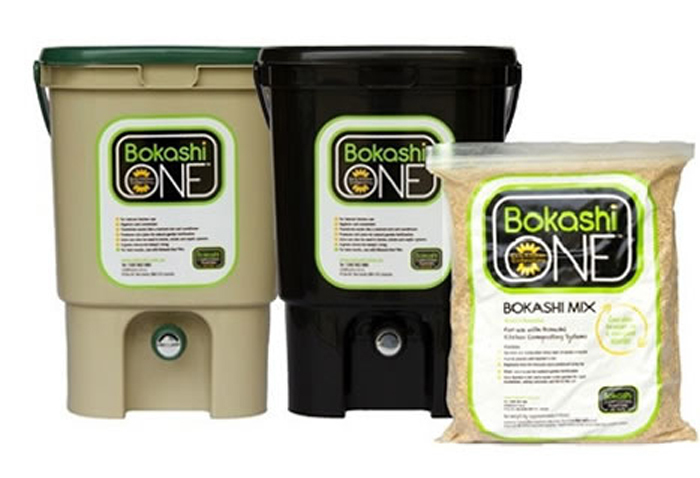
The Bokashi One Bucket
Size: 20L
Cost: $98 + $12.99 for dry 1kg bag of Bokashi One Mix (an ongoing cost, approx. every 2–3 months); double that for a dual system (recommended).
Amount of waste per week: Up to 20L.
Good points
- Can double as a kitchen caddy if you have space for it in your kitchen.
- Any food waste can go into it.
- You don’t need your own backyard – you can donate the fermented waste to a local composter, friend, or community garden.
- You can transfer the waste to another composting system to fully decompose.
- Foul smells, pests and vermin aren’t an issue.
- No assembly required – just check that the tap doesn’t leak, and adjust it if it does.
Bad points
- Too large for a benchtop.
- Not suitable for brown or garden waste.
- A full 20L bucket can be a little heavy to carry.
- If not donating the waste, you’ll need to dig a suitably sized hole in your garden every two weeks or so to bury the waste.
- The tap position is a little too low to the base for collecting the juice in a reasonably sized container.
- The tap control could have larger labels and a better grip or crossbar.
- While the lid seals well, it needs to be opened and closed with two hands.
- Could have used a home compostable mail bag for delivery.
Composting tumblers
Best suited to: Maximum reduction in both food scraps and brown waste going to landfill, and those wanting compost for a healthier garden.
What you need: Enough space to store the composter, and somewhere to offload the compost – your garden, a local community garden, or a friend.
Location: Outdoors. They can drip and stain tiles or a timber deck, so either a mat or tray needs to be placed beneath it, or it can be placed on grass. Too much dripping is an indicator that the balance isn’t right – add more brown waste to rectify.
Cost: $69–875
Good for: Most green and brown waste, including garden waste, shredded paper, cardboard, and other home compostable products.
Not good for: Excessive dairy, citrus, or meat and bones.
Effort: Minimal maintenance, but you need to balance content 50:50 green to brown waste by weight (not volume), which is a fair amount of brown waste needed. Turning is required to aerate the content, but as it’s a tumbler it’s generally easy to do if the handle is large and well designed, and much easier than a compost heap or bin.
Pests/vermin: Tumblers are high off the ground and sealed well enough to deter rodents. Smaller critters may become an issue in warmer months, but less likely in a healthy system.
Bonus: Reduces more than just food scraps from going to landfill, like garden waste, lawn clippings, wilted flowers, dry leaves, tissue, paper towel, food soiled paper or cardboard, and other home compostable products. You can easily reduce your weekly garbage to less than a third with this system.
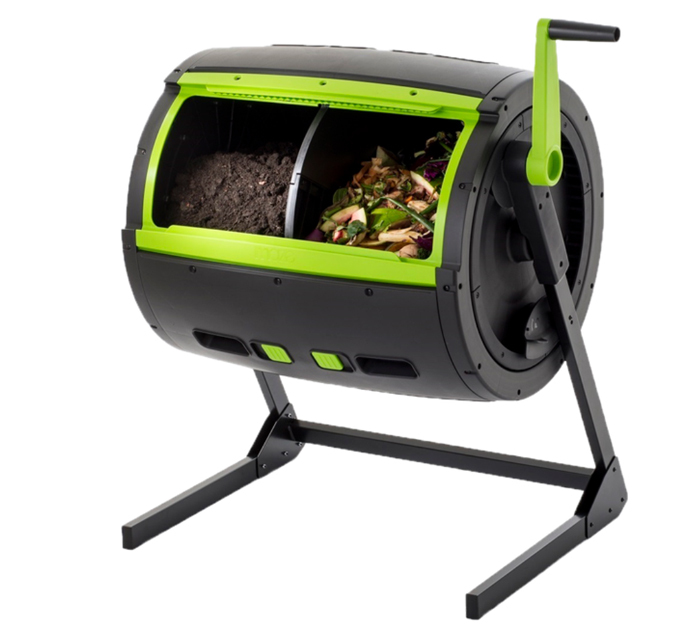
The Maze Compost Tumbler
Size: 245L
Cost: $269
Amount of waste per week: Not stated, but can handle a large family’s food waste easily.
Good points
- Relatively easy to assemble (but a little time consuming at two hours). A second pair of hands came in handy a couple of times during the process. Someone with larger hands and fingers may find it fiddly and more difficult to assemble.
- Dual system for continuous composting.
- Labelled sliding lids – one with a plus sign (for adding waste), and the other with a timer symbol (maturing). They can be switched to the appropriate side as required.
- Large, easy-to-use rotation handle with a ratchet lock to prevent it from rotating backwards.
- Finger grooves in the tub to aid in rotation if needed.
- Multiple easy-to-use sliding air vents to control airflow.
- Large volume.
- Handles both green and brown waste for maximum waste conversion.
- Made from mostly recycled plastics.
Bad points
- Difficult to maintain the recommended 1:1 by weight ratio of greens to browns without actually supplementing with lime or dolomite. This is effectively a ratio of 1:7 by volume. The use of all-brown waste from our household of five (plus a home office) wasn’t enough.
- An effort to shred brown waste. It may not be something that a busy family is likely to sustain.
- If the compost is too moist, the tumbling motion could encourage a ‘balling’ effect. Adding lime or dolomite to rectify the situation was an added cost.
- Packaging is comprised of quite a few unnecessary soft plastic bags and sleeves.
- Compost juice can drip, so place on grass or protect ground surface to avoid staining. Bin juice is nutrient dense so can be collected for dilution and feeding plants.
- Choose your location thoughtfully, as it can be awkward and heavy to move once loaded.
Underground compost and worm farm
Best suited to: Those with a garden, preferably with raised garden beds.
What you need: Garden space to install. Three quarters or more of these types of systems are underground so very good draining soil or a raised garden bed is needed. It can’t get too hot in summer so needs part shade, and some protection from long down pours so the worms don’t drown.
Cost: $25–300
Good for: Most green and brown waste.
Not good for: Excessive amounts of dairy, citrus, onion, garlic, meat, bones or spicy foods.
Effort level: Medium, as you need to keep the worms happy with the right temperature, moisture level, aeration, and the right amount of the right foods. Even systems without the initial added worms will attract earth worms into them, so keeping them happy will keep your system thriving.
Pests/vermin: As it’s mostly underground, it shouldn’t attract any vermin. And keeping the system healthy will minimise ants or other pests.
Bonus: Produces worm tea which is a great fertiliser for pot plants and the garden – with some systems such as the Subpod, it can be plumbed to be collected, or left to soak into the surrounding garden bed. Worm casting (worm made compost) provides excellent nutrients for garden beds and edible plants. An optional raised garden bed is available as a package deal with a Subpod, so you can start growing edible plants in the vicinity of your compost. It’s a great project for getting the kids involved in gardening and growing food.
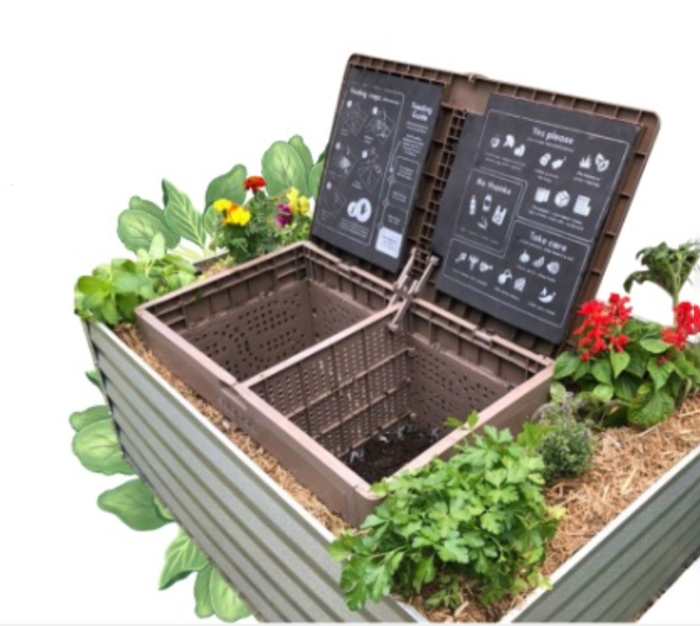
The Subpod Classic
Size: Up to 200kg capacity; dual chamber system.
Cost: $299 + $75 for 2000 worms. Mini Subpod is also available for $174 + $50 for 1000 worms.
Amount of waste per week: Base/level 1: 2–5L per week; mid-level 2: 5–10L per week; max level 3: 10–30L per week. Then you start again.
Good points
- Dual action system – traditional underground compost plus worms.
- Large working capacity.
- Can double as a garden seat (if in a raised garden bed of the right height).
- Optional raised garden bed package available.
- Can compost much more than a standard worm farm (more like a classic composter).
- Minimal flat-pack sized packaging, all of which can be composted and/or used for worm bedding.
Bad points
- Need free draining deep soil to install – otherwise a raised garden bed is highly recommended.
- Need to manually aerate with a tool (optional tool available).
- Shade or part shade needed, and rain protection is recommended to protect worms.
- A little fiddly to assemble.
- Laborious to install underground but should be easier in a raised garden bed.
- Takes anywhere between six weeks to three months to get the system functioning at full capacity.
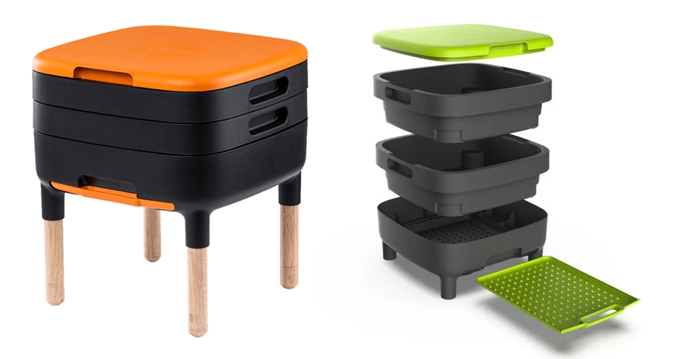
Above ground worm farm
Best suited to: Single households up to larger families with children – you choose the size and system to suit you.
What you need: Either a small corner nook indoors or on a balcony, or a larger outdoor setup – it’s your choice. It needs to be out of direct sunlight and protected from rain. Most systems will indicate what’s required to get started, and package deals are often available. For example, a worm blanket is recommended to keep the worms at the right temperature and help retain the moisture level. Many also offer add-ons such as extra working trays as your systems grows, and the worms can chomp through a lot more food waste.
Cost: $60–400
Good for: Most green and brown waste.
Not good for: Dairy, citrus, onion, garlic, meat, or spicy foods.
Effort level: Medium, as you need to keep the worms happy with the right temperature, moisture level, aeration, and the right amount of the right foods.
Pests/vermin: Too much food will start to rot and smell, therefore attracting vermin and pests. It may even make the worms sick.
Bonus: Produces worm tea and worm castings (compost) which is a great fertiliser for non-edible plants and garden beds.
The Maze Worm Farm MWF-MV1
Size: Small; dual chamber/tray.
Cost: $129 + $50 for 1000 worms
Optional extras include: Extension legs, worm blanket, and a drainage tube for worm tea.
Amount of waste per week: Average of 4kg when established.
Good points
- Small compact system.
- More working trays can be added to increase the capacity.
- Very easy to assemble.
- Handy hook under the lid which clips to the side of the unit when attending to worms.
- Good for getting kids involved.
- A good complementary compost system.
- Suitable for indoor use or on a balcony.
- Optional drainage tube and extension legs are a good idea as the tea can drain directly into a jar.
- Minimal packaging, such as a recyclable/compostable box and a plastic hessian worm bag that can be reused.
Bad points
- Won’t make a significant dent in a family’s weekly food waste going to landfill.
- Makes a bit of a mess when you lift the hessian worm blanket to feed the worms. The worms make their way into it and worm castings attach to it.
- Worm tea trays need to be checked and transferred regularly so they don’t spill or go to waste.
- Can be tricky to empty the worm tea tray, as it’s a flat wide tray.
- Need to check to make sure the pH doesn’t go out or balance. We had to remove the blanket, aerate daily and add wood ash to rebalance the pH which was too acidic and favoured the growth of white pot worms.
Solar waste digesting
Best suited to: Those wanting to prevent all food waste from going to landfill – compost is not the aim. The food scraps get reduced to carbon dioxide and nutrient-rich water that seeps into the surrounding ground.
What you need: A very sunny backyard spot with free draining soil to install. All day sun is highly recommended. Test out the drainage by digging a hole 80cm wide x 60cm deep. If a bucket of water poured into the hole drains within 15 minutes, the soil drainage is fine. If it doesn’t drain that fast, we don’t recommend installing it underground – install it in a raised garden bed instead.
Good for: All food waste, including cooked food, meats, small bones, oils and dairy.
Not good for: Garden waste, lawn clippings or brown waste.
Effort level: Low – as the manufacturer claims it will only need to be emptied once every 2–3 years. Digested waste nutrients seep into surrounding ground. Some effort is required to dig and install the unit, so it’s worth checking what your soil is like before deciding on such a system.
Pests/vermin: Too much food may rot, smell, and attract vermin and pests. It’s a well-sealed system and the waste is in the bottom of the buried half of the unit, so if you follow directions and keep the exterior clean, pests shouldn’t become an issue.
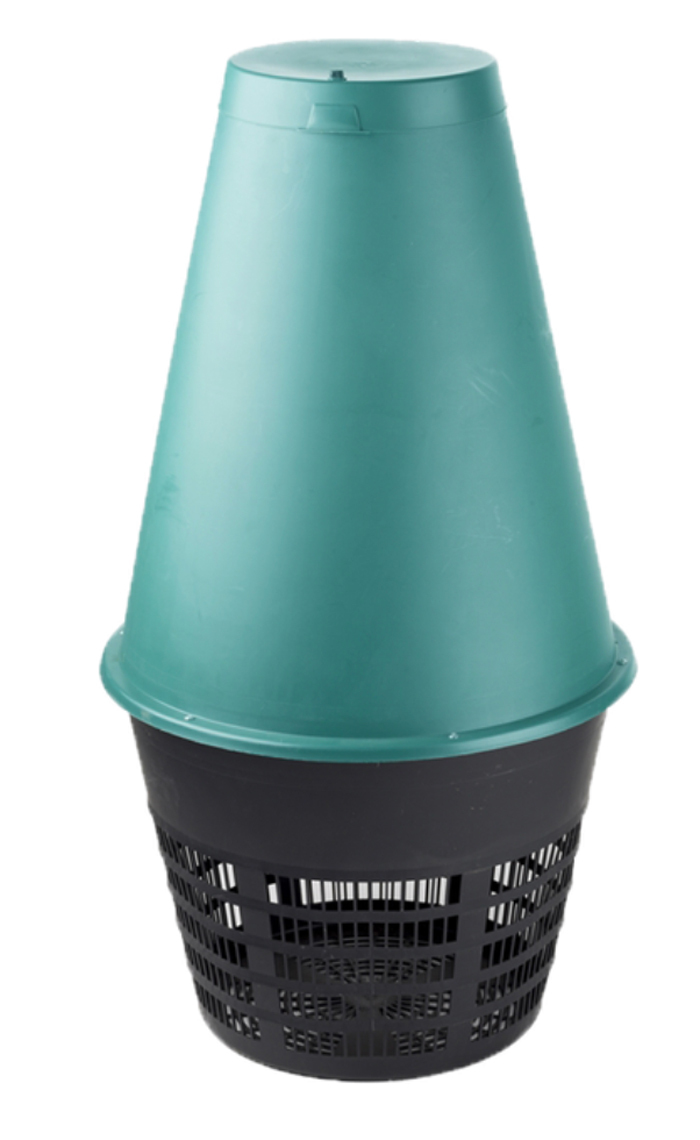
The Green Cone Solar Digester MC-GCONE
Size: Large
Cost: $299
Amount of waste per week: In summer: 4.5L every 1–2 days (~15–31L per week). In winter: 4.5L every 2–3 days (~10–15L per week).
Good points
- Large capacity.
- Very easy to assemble.
- Very low maintenance system.
- Can digest all your food waste and prevent it from going to landfill.
- A good complementary option to handle foods that can’t go into a compost system or worm farm.
- Good for those who produce a lot of meat, citrus, spicy or fatty food waste.
- Arrives with very little packaging (including a recyclable cardboard box).
Bad points
- Won’t produce any compost.
- Opening is small, so care needs to be taken so waste doesn’t spill around the unit.
- Best to keep the exterior and surrounding area free from food waste to deter pests and vermin.
- Not suitable for garden or brown waste.
- Hard to hide in the yard if it needs to be in an all-day sunny position. Unfortunately, it’s not tough enough to handle being a goal post or cricket wicket.

